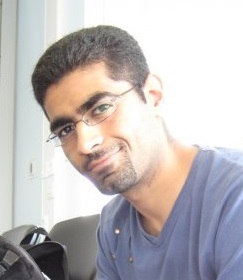How one pharmacist used digital to transform communication with patients
Posted on

Pharmacist Murtada Alsaif describes how his frustration at being unable to communicate with his patients, led to him co-developing a software that translates the pharmacy dispensing label.
“I was a bored pharmacist after a week on the job. I just couldn’t understand why pharmacists went to work day after day. I convinced myself that it was just for the money, and there were a lot of instances that reinforced that view.
“The truth is, I was short-sighted and cynical. This is one of those jobs that gives you that warm fuzzy feeling but you have to be patient. The fuzzy feels take longer than a week and you have to do a lot of boring dispensing to get those moments.
“Like with any job, your average pharmacist will be frustrated by a few things on a daily basis. For me, that frustration was talking.
“There would always be that one patient who seemed really nice (positive attitude to healthcare professionals) and asking about their medicines (engaging with therapy) but who I didn’t share a common language with. I had to use broken English, mime, rely on that patient’s children or, in a worst case scenario, send them away without giving them any medication counselling.
“I was frustrated that I had no tools to communicate with that patient.
“So when Ghalib, my cofounder, called to say he had this idea for a software that translates the pharmacy dispensing label, I was all in!
“So how do you do it? How do two people with absolutely no knowledge or experience in coding, linguistics or entrepreneurship develop translation software?
“We started by breaking down the process of how we wanted it to work. We decided that our software had to be 100% accurate and as similar as possible to what pharmacists currently use. Algorithm-based translations introduce errors up to 90% depending on the language. With the level of risk we were dealing with, we actively decided to ban Google Translate and its ilk.
“As the project developed we started to fine tune our translations to the context of pharmacy practice in the UK. This lead to a lot of interesting conversations with our translators, like how the Bengali word for “pregnancy” is taboo in their community, how the expression of “avoid alcohol” has to be phrased more sternly in Polish, and how published translations of “addiction” in Somali actually read as “to get euphoric/high”.
“Making these decisions at that stage determined how our translations would be used by patients, months, if not years, down the line. And we didn’t have the cash to start again, we only had one chance to get it right. Making decisions like these without any feedback loops or proper data was one of the most difficult aspects of this business.
“So that’s a few parts of the puzzle, but what about the software development? I met Tucker, our third cofounder, while I was doing my PhD in Cambridge. Tucker took our concept of translated information and built it into writtenmedicine.com
“This blew our minds.
“Since then, we’ve raised a bunch of money from grant providers (Nominet Trust,UnLtd), competitions (Shell LiveWIRE) and investment (Bethnal Green Ventures). We’ve trialled it in a number of pharmacies but we mostly hear that it is an “interesting idea” followed by a “no, thank you”.
“Having said that, we have made substantial progress by convincing a couple of NHS Trusts to pay for our software; we have connected our tech with existing software used by hospitals; and we have an ongoing academic project in 12 community pharmacies that aims to measure the difference translated labels make in patient care.
“So what does the future hold for Written Medicine?
“Only time can tell. What we do know is that it has taken blood, sweat, tears and failure to achieve a tiny ounce of success. Fingers crossed the balance shifts in the future.”
About Written Medicine
Written Medicine’s cloud-based software makes use of a database of hand-compiled phrases translated by professional translators in a four-stage development process. The last stage of this process is testing by a UK qualified pharmacist who is literate in the translated language. The current list of available languages includes Arabic, Bengali, Hindi, Polish, Punjabi (Gurmukhi) and Somali.
Written Medicine is one of 31 digital health innovations selected for the 2016/17 DigitalHealth.London Accelerator cohort.


